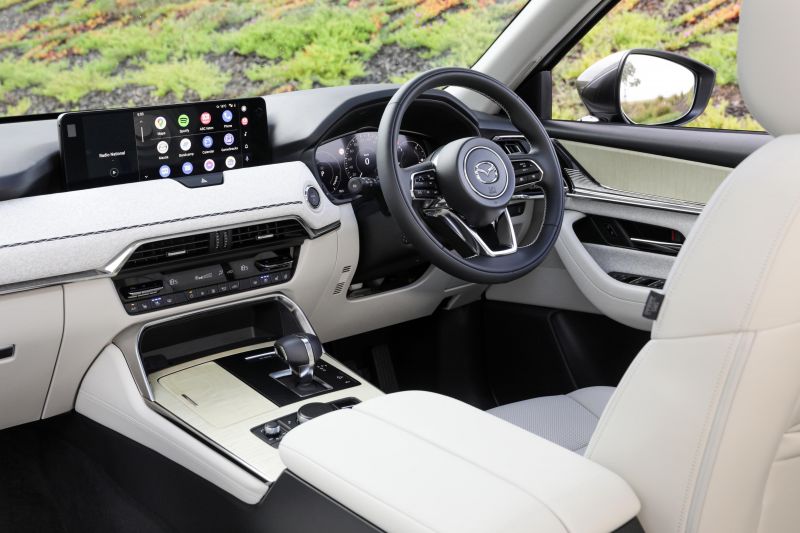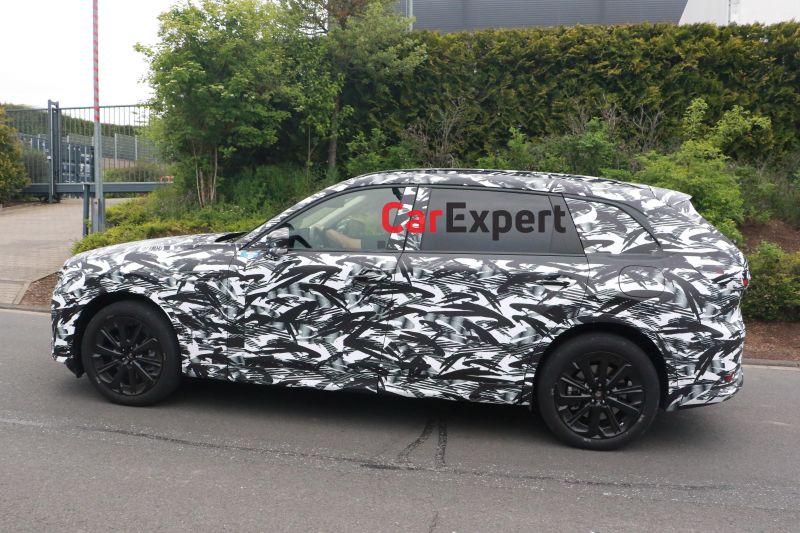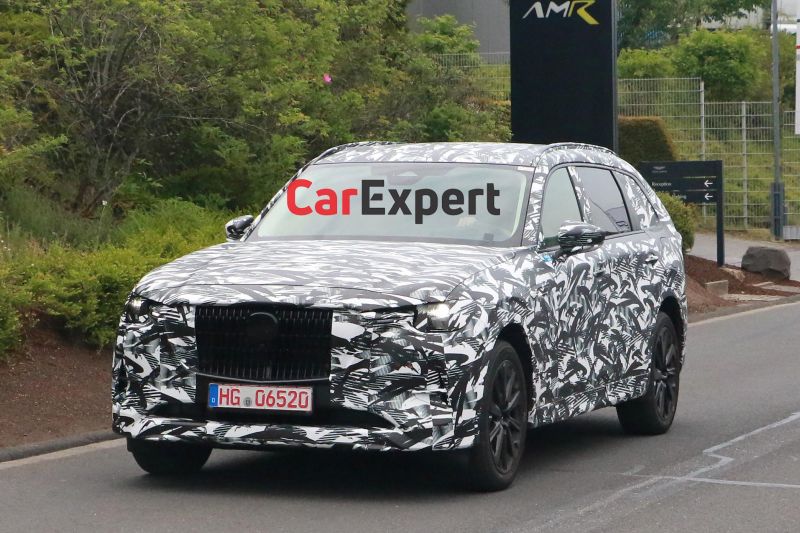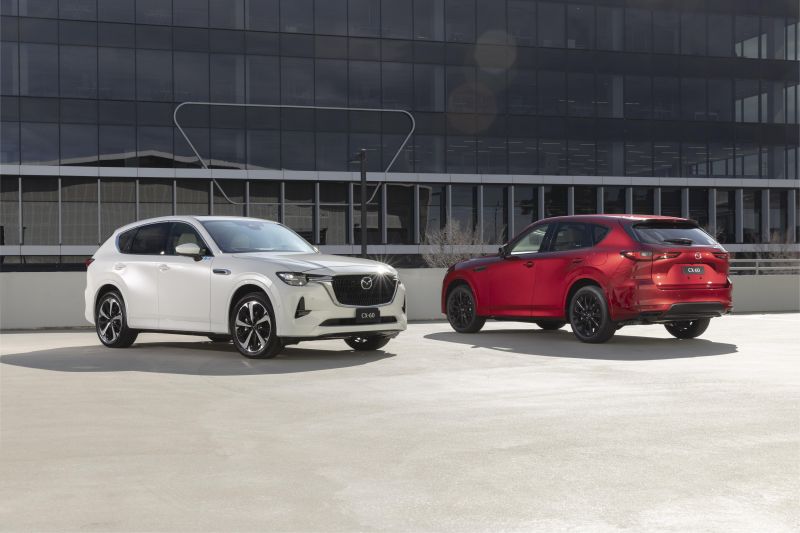Mazda is busily rolling out a quartet of SUVs on its new rear/all-wheel drive Large Architecture, but the next cab off the rank has reportedly been delayed.
Japanese outlet Best Car Web reports the CX-80, which was reportedly set for release in Japan during October 2023, now won’t be introduced until early 2024. No reason was given for the reported delay.
The CX-80 is a longer, three-row companion to the CX-60, which is already on sale in Australia.
This duo is being aimed at markets like Japan and Europe, while the wider three-row CX-90 and its as-yet unrevealed two-row CX-70 counterpart are being targeted at North America.
Uniquely, Mazda Australia is getting a mix: the CX-60 and CX-90 are already on sale here, and the CX-80 has been confirmed for a local launch. Only the CX-70 has yet to be locked in.
While the local arm has already confirmed the CX-80 is coming here, it didn’t confirm launch timing.
Mazda has yet to reveal or even tease the CX-80, but a prototype was recently spied revealing styling that borrows elements from the CX-60 and CX-90.
It follows broadly the same themes as the CX-90 but with a narrower body, and features a similarly bulbous tailgate to Mazda’s largest SUV. Front-end styling is similar to both the CX-60 and CX-90.
The CX-60 measures 1890mm wide, and the CX-80 will likely be the same; in contrast, the CX-90 is 1994mm wide.
It’ll slot in between the CX-60 and CX-90, and Mazda is clearing some room by axing the three-row, front/all-wheel drive CX-9. The front/all-wheel drive, three-row CX-8 is sticking around for the foreseeable future, however.
While the CX-80 will differ in having a third row of seating, we can expect it to have a similar interior design and likely the same technology as the CX-60.
The smallest of the Large Architecture SUVs offers a choice between 10.25-inch or 12.3-inch infotainment screens, 7.0-inch or 12.3-inch digital instrument clusters, and LED or adaptive LED headlights.
There’s also wireless Android Auto and Apple CarPlay and a power tailgate on all models, while depending on the variant there are luxury features like heated and ventilated front seats, a heated steering wheel and a panoramic sunroof.
All models come standard with autonomous emergency braking (forward and reverse), adaptive cruise control, blind-spot monitoring and rear cross-traffic alert; the CX-60 can also be specified with front cross-traffic alert, a surround-view camera, and a Level 2 autonomous driving aid.
You can view a full CX-60 spec breakdown here.
“We’re very comfortable we’ll end up with more market coverage and not less,” Mazda Australia national marketing manager Alastair Doak told CarExpert in March.
“We’re quite comfortable that each will occupy a different space and tell a different story. If we weren’t comfortable, we might not have been confirming CX-80 today.
“They will be different, and they will have a very clear space in the portfolio.”
Mr Doak noted Mazda Australia was questioned when it introduced the CX-8 locally alongside the CX-9, and said both models ended up becoming successful even if they were initially perceived as being in-house competitors for each other.
We can expect a higher base price than the related CX-60, which opens at $59,800 before on-road costs in base petrol Evolve guise and tops out at $87,252 before on-roads for the plug-in hybrid Azami.
The CX-80 should therefore be a pricier proposition than the CX-9, which spans from $47,600 to $75,165 before on-road costs. A base price tag starting with a ‘6’ seems likely, considering the CX-90 range opens at $73,800 before on-roads.
In addition to developing the new Large Architecture, Mazda has also developed new inline six-cylinder petrol and diesel engines, plus its first plug-in hybrid powertrain for this platform.
Given the CX-60 and CX-90 have been confirmed to receive 48V mild-hybrid petrol and diesel and plug-in hybrid petrol powertrains in Australia, the CX-80 could also receive a similar powertrain line-up.
The CX-60’s 3.3-litre turbocharged inline-six petrol engine produces 209kW of power and 450Nm of torque – down 45kW on the CX-90’s six – with a claimed 0-100km/h time of 6.9 seconds.
The 3.3-litre turbocharged inline-six diesel engine produces 187kW and 500Nm of torque, good for a 0-100km/h time of 7.3 seconds.
The CX-60’s plug-in hybrid option comprises a 2.5-litre four-cylinder petrol engine, 100kW electric motor and a 17.8kWh lithium-ion battery pack, for total outputs of 241kW and 500Nm and a 0-100km/h time of 5.9 seconds.





